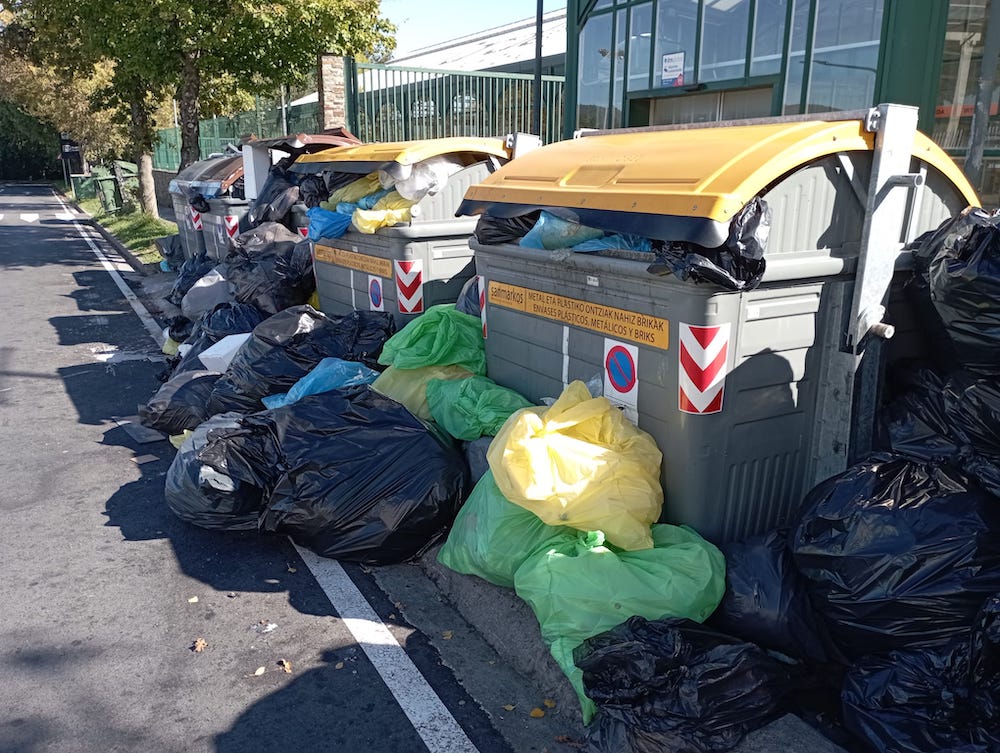Larke de Azkoitia: mediator of urban works and waste in the valley
- According to the report submitted by Lark in the Basque Government, it will have a management capacity of 183,390 tonnes per year and plans to manage a total of 61 types of waste. Of these, most of the waste to be managed (163,785 tonnes/year) is construction and demolition. The second main source of urban waste collection (12,800 tonnes/year) is urban waste.

These are the main wastes that, according to the environmental impact report, the Azkoitia Larke 360 plant, classified by the highest quantities. Waste is classified by the European RSI code (here what that RSI is, an explanation):
Construction and demolition waste
The total amount of waste to be generated will be 163.75 tonnes per year. These include mainly "mixed waste" (42,864 t), "concrete mixtures" (33,679 t), bricks (22,963 t), concrete (12,584 t), "wood, glass and plastic" (13,472 t) and "bituminous mixtures" (10,000 t).
Construction and demolition waste is estimated at 12,595 tonnes of land and stones, "including contaminated areas".
A further 10,716 tonnes per year will be used for the construction of plaster materials. Gypsum is toxic, so it cannot be recycled or reused.
And 1,510 tonnes of waste will be made up of asbestos-free insulation materials.
It can be read here that the construction and demolition waste management machine presented by Lark does not allow a large recovery of this waste.
The Maxixatzen media have echoed the streets that will generate the rubble of the works.
Urban waste, second main source for Larke
In total, Lark expects to receive 12,800 tons of urban waste per year. The main part shall consist of "selectively collected fractions" (11,900 tonnes). Metals will be the most abundant of selectively collected metals (2,380 t) and the remainder is expected to be collected in very similar quantities: 1,785 tons of paper and paperboard, one glass, one plastic, including garments; 1,190 tons of fabrics and other wood.
As regards urban waste, Lark plans to receive 200 tonnes of "rest fraction" annually: 100 tonnes of municipal waste and 100 tonnes of road cleaning waste.
These are the main ones, but the environmental impact report has also enabled it to manage other types of waste, all of which are classified as non-hazardous. In total, it will be able to manage 61 types of waste.
The City Hall of Donostia-San Sebastián announced at last Thursday’s plenary session that it will increase the waste rate by 26.5% from January 2025, claiming that Waste Law 7/2022 obliges this. Eguzki, for its part, has denounced that the law only applies in terms of costs,... [+]
Recently, the UPV/EHU organised a series of summer courses to address the issue of climate change. The Environment Minister, Asensio, took advantage of the courses to highlight the incinerator’s positive contribution to climate change, which is surprising, since for every tonne... [+]






















